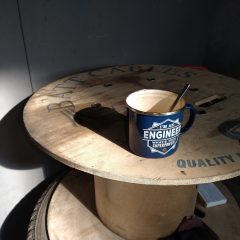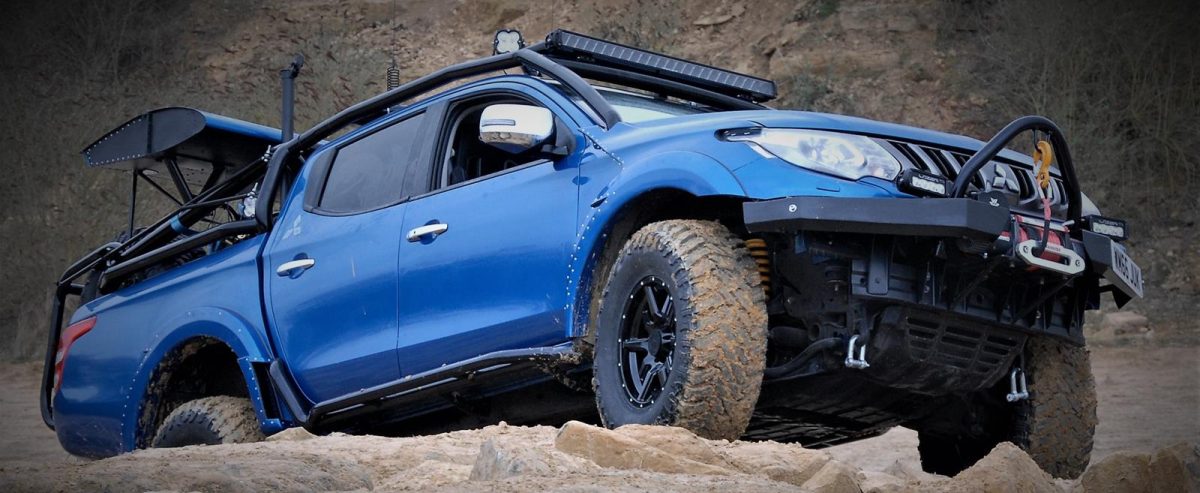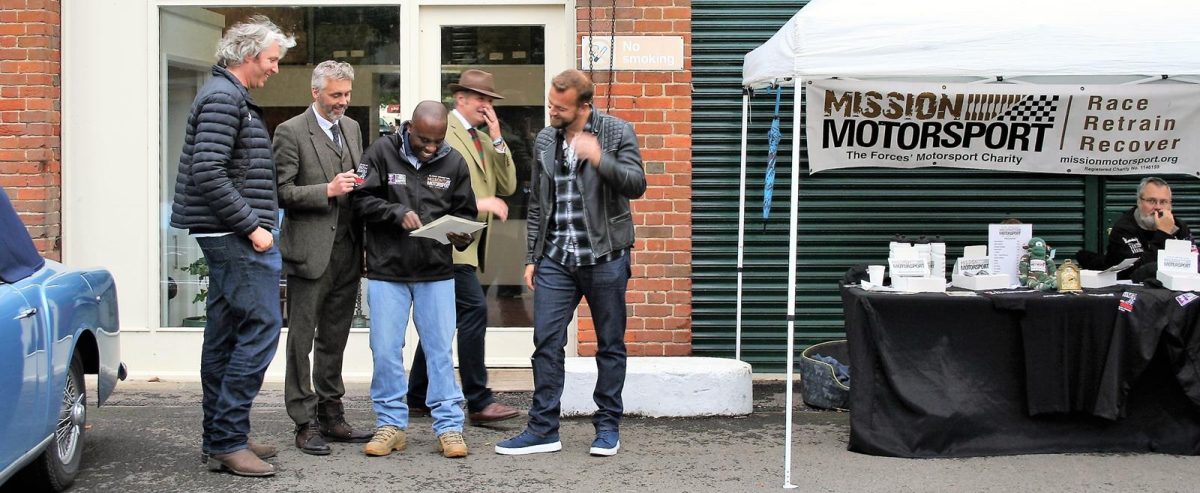There wasn’t so much an actual ‘Design Brief’, more a sort of chat about really cool things to have on a car, and which were the best-looking desert race cars ever.
It was an unusual conversation from the start:
I need you to build a pickup, Dakar rally-style, with hints of Pre Runner, really massive tyres, and an aircraft wing on top.
A wing? For lift? Do you want it to fly?
No, it’s just to house the swarm of camera drones that need to be launched at the touch of a button.
Oh, right, that’s special. Anything else?
Yes, it needs an emergency survival moped fitting to the load bed. Oh and a winch, some jerry cans, on-board tyre inflater, and lights. Lots of lights.
An unconventional start to a design and build project certainly, but then again the customer was not exactly conventional either. Tom Ford, known as Wookie for reasons lost in the mists of time (see early episodes of Fifth gear for clues), is an adventurer and ghetto engineer, apparently, with a genuine passion for great engineering and design. Usually, he is fairly involved with his projects but in this case, he was slightly inconvenienced by having to nip over to the USA to present Top Gear America.
Most sensible engineers would say that this would take a lot longer than the three months we actually had to build it. But I’ve never really got on well with sensible so I leapt at the chance.
Clearly I needed the best team I could find, luckily I’ve worked with Dave Bridges and Brad Harrison before, awesome people who do amazing work (ask Dave about the V12 Studebaker) and who will stop at nothing to get the job done. Add to this the legendary Paul Cowland helping by wrangling a whole host of suppliers and that gave me the confidence to take it on.
Everything is bespoke on this build, either built from scratch or using modified parts; the SuperPro suspension parts were for a slightly different model and had to be adapted. The roll cage was a custom build from Performance & Protection but with extra modifications for camera arms and all the other clobber we put in there. They are superb creators of roll cages and every time I asked for some extra bits of high tensile tube bent in certain complex ways they met the challenge with grace and speed.
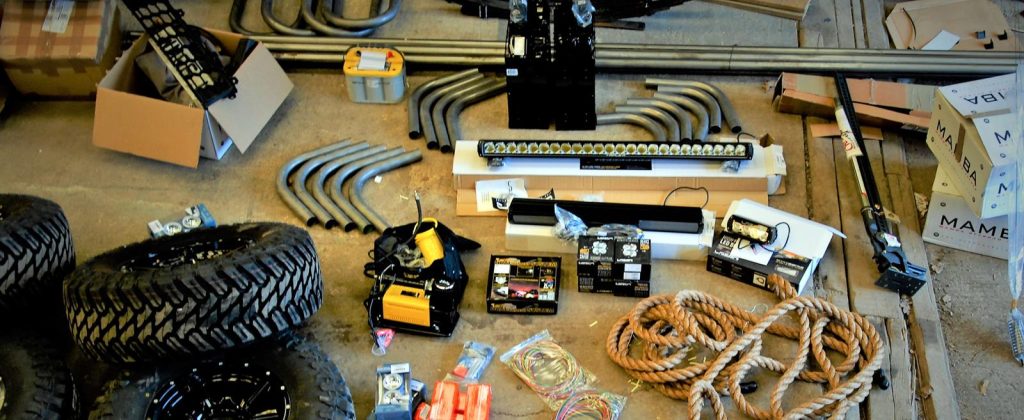
The team at Mitsubishi were absolutely heroic during the build, their enthusiasm matched by practical assistance whenever called upon.
One thing that struck me as soon as I started working on the truck was how well the Mitsubishi L200 is put together. This is a working vehicle and everything does its job properly; it’s robust, reliable and efficient. This made the project that bit more enjoyable to build.
The way I approached this was to start by making it look right, arranging the features in the best way for the filming work it had to do, then engineer it to get around all the hideous compromises that this gave it.
One thing became apparent very early on; there was a lot of weight going on it, but worse than that the weight was high up and a lot of it was behind the rear axle line. This is a bit of a nightmare from an engineering point of view as it makes it very unstable. The roll centre was high too, meaning that as you turn into a corner it takes time for the car to react, and when it does finally react, there is a tendency for it to wallow, unload the wheels on the inside of the corner and lose traction.
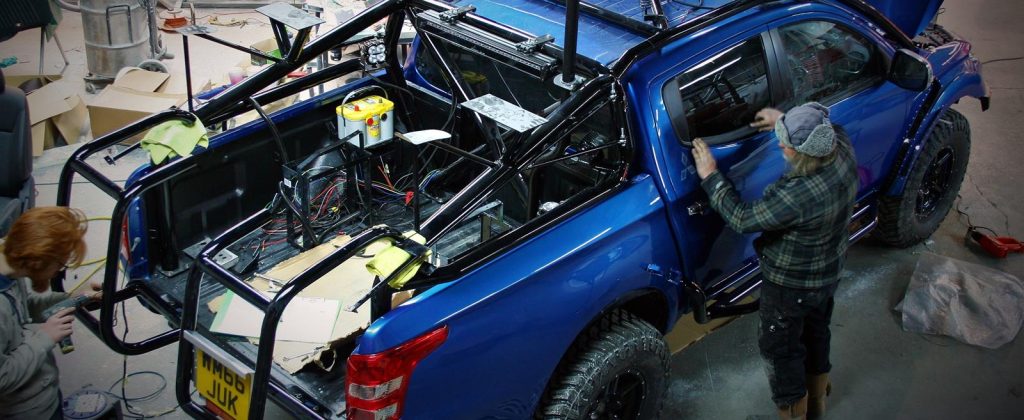
With all that weight hanging over the back I needed to think of a way of making it handle, so my mind turned to what other cars also this fundamental design fault, so obviously the Porsche 911 sprung to mind.
That particular miss-balanced relic corners by putting most of the side force through the rear tyres and just using the front tyres to point the car in the right direction, or a close approximation of it. Really, when you analyse how a 911 suspension works, it’s prey similar to steering a wheelbarrow backwards… Ok, I can hear the hate building now from the Porc fanciers, I might have gone too far with that analogy!
Anyway, using that solution on the L200 meant loading up the rear tyres a lot more than the front, changing the front geometry, changing the drop link angles on the roll bar and running the rear tyres at 50psi with the fronts set to just 35 psi.
To get some stability at speed I wanted to increase the front caster angle significantly, and as luck would have it the L200 has adjustable offset bolts on the wishbones, but due to the extreme nature of this truck even on its maximum adjustment, I couldn’t quite get enough angle without the wheel fouling the wheel arch at full bump. The last thing I wanted was the tyres ripping the arches off when Wookie lands a massive jump off a dune, so further modification followed.
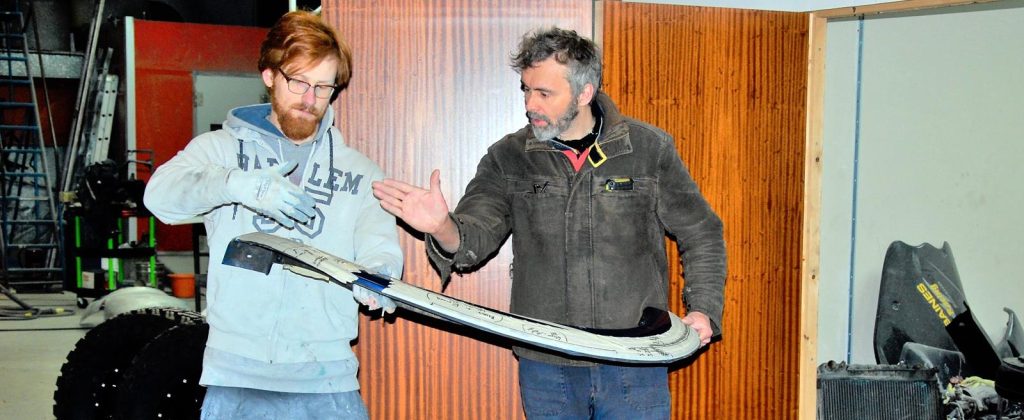
I also needed a rear anti-roll bar (standard L200 doesn’t have or need one) and a stiffer front roll bar. Now, stiffening roll bars actually reduces traction on normal roads as it reduces the wheels ability to react to road irregularities interdependently. Stiffer springs and dampers would be needed, but crucially I needed to increase grip by making the tyre contact patch bigger. Well, any excuse for bigger tyres.
The standard truck has tyres with a diameter of 28 inches, I tried a few ideas out, moving the suspension up and down and the steering side to side though its full movement to see how much space there was for bigger tyres, we could just about get away with 32-inch with a few adjustments, but that wasn’t really big enough for the look Tom wanted, with a bit more modification I could get 35-inch tyres in, this did involve cutting a chunk of bulkhead out, some footwell too, and welding it back together again in a slightly different shape. I also moved the washer bottle from the front left wheel arch to the rear right one and removed most of the ends of the plastic bumper.
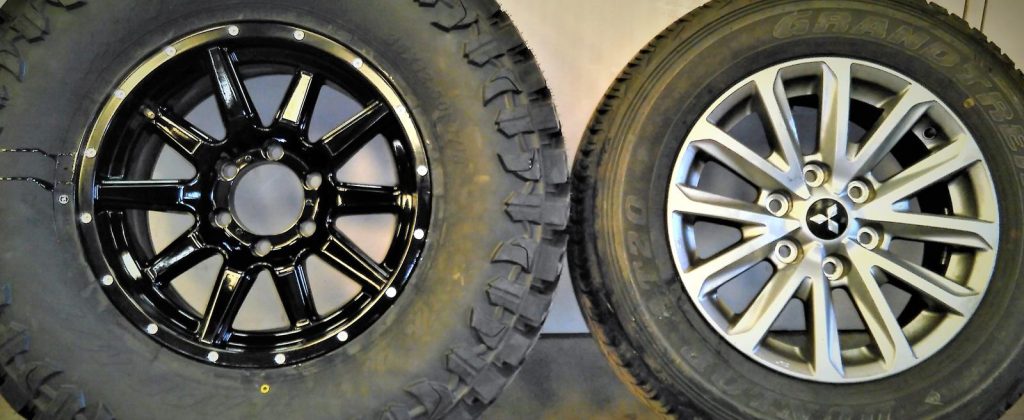
The challenge with the wing was firstly where to put it. If it went on the roof it would look like one of those roof boxes that caravan owners seem to like, and I don’t think Wooky was going for the happy camper look. My preference was to hang it right out the back, like a Top Fuel drag racer, but then it would completely ruin the ability to get the emergency moped out in a hurry, which misses the point somewhat.
So that left the load bed area which is good for several reasons; firstly it looks good, secondly the air flow will be fairly turbulent in this area so the chances of the wing giving us unwanted lift are reduced. To be on the safe side I also angled the wing with its tail up a bit, so if anything it would give a small amount of downforce. Now, I expect you’re wondering why we didn’t just fit it upside down so it definitely gave downforce and not lift, well according to Wooky it’s something to do with aesthetics, meh. And anyway I didn’t want huge downforce there as the rear axle is already loaded heavily enough.
This wing has secrets. All is not as it seems. If you look at most aeroplanes you may notice the wings taper as they go out, so if we just cut a section of wing one side would be shorter than the other. A simple solution would be to cut the left and right wing ends off a scrap plane and join them together to make a symmetrical item, but that was not possible with this plane because one wing had been destroyed in the plane crash…
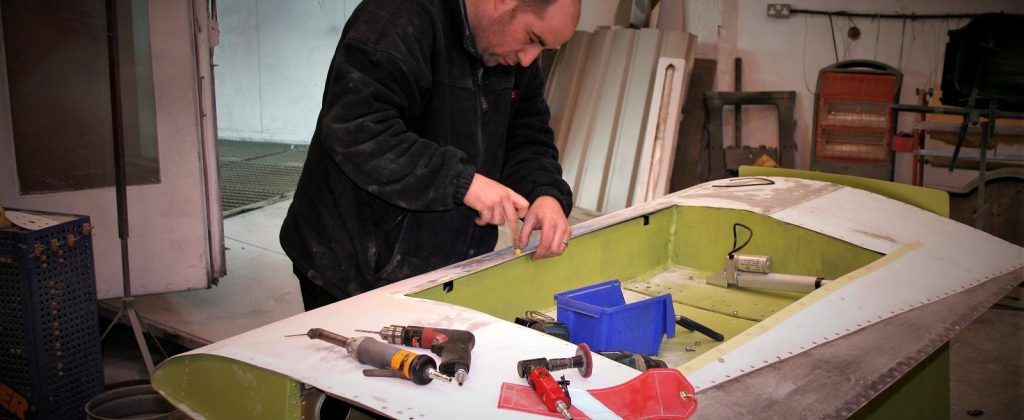
So the skills of Stuart (Stu-Art) were employed to take the wing section apart and let in new aluminium to even it up. Not an easy job, and one made more tricky by the need to fit a large compartment into the top of the wing so we could get the drones in.
After two week solid work, and a couple of all nighters, Stuart heroically set off from up north at the crack of dawn to bring the wing down to the Bedfordshire workshop. He even brought biscuits, top bloke.
Mounting the wing proved a tad tricky, the main spar which is the back bone of the wing runs diagonally, so the mountings had to be further forward on one side, this didn’t look great so we made wide mounting plates that allowed us to use the rear part on one side and the front part on the other.
I made a real effort to enhance the Mitsubishi styling, so the cut angles in the wings and around the front roll cage reflect the lines of the original front end, the mirror ally insert next to the headlights emphasises the width gain but also enhances the lines of the stock headlight, there’s a lot more detail in there than you might at first notice.
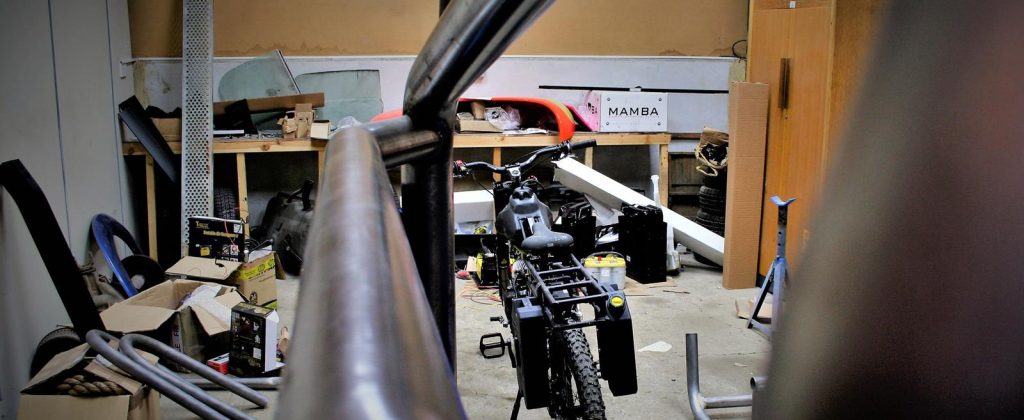
I knew I had to widen the wheel arches, but I didn’t want to just stick some plastic arch flares on, that would be far too easy. Thinking about Dakar rally cars and Pre Runner trucks I kept thinking about boxed out arches with big vents in. I also like the way the Mitsubishi design has angled lines joining with tight curves. Putting these two together was easier said than done, so one day I set the front right wing on the work bench and just cut it in two with a plasma cutter, using the existing Mitsubishi lines as a guide and reflecting the headlight cut out from the front. To be fair, at that stage it looked terrible, but I had a dream…
Fitting the remains of the rear edge of the wing back on the car, I then made some 40mm spacers to mount the rest of the wing. This created some interesting spaces and shapes, time to get creative.
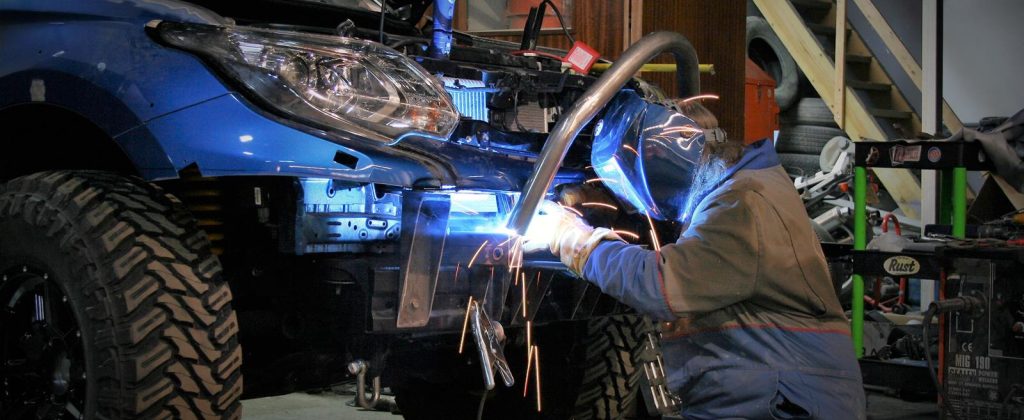
Having mocked up a rough approximation of what I wanted on the wings I tasked Brad with making it work properly, creating a set of plastic and aluminium inserts and finishing it to a high standard. As luck would have it Brads dad runs a rapid prototyping firm which specialises in making tricky plastic thingys. Both of them worked long hours to create the extensions, they also added a bit of their own ides too which makes it a much more personal task.
Everything had to be designed so that it wouldn’t break if it was dropped from a great height or hit with rocks, which is pretty much what happened to it in the desert of Namibia
There are also a load of hidden modifications, I moved the intercooler up 5mm so I could make a better winch mount, it now has two batteries linked with a smart control system to run the winch and extra lights when the engine is idling or off. Lots of engineering detail that supports that stunning exterior.
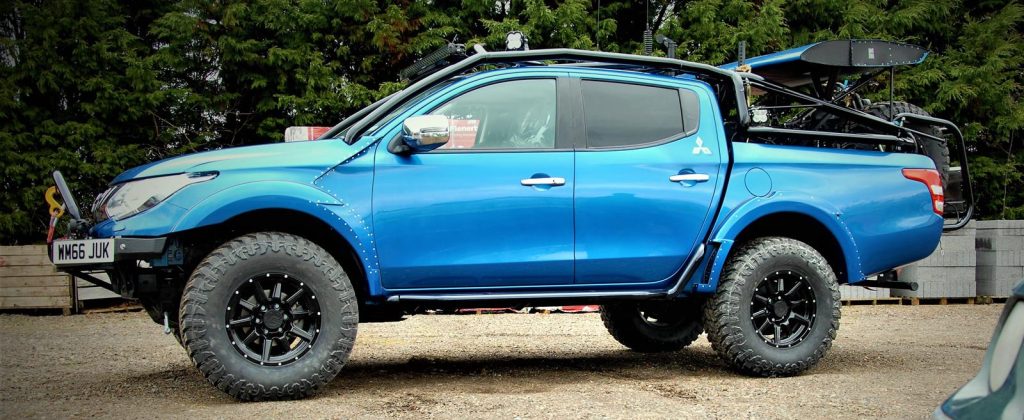
This project has been an absolute hoot, I’ve loved it, sure there were a few sleepless nights but anything worth while does that. Here’s to the next mad project.
Project Swarm Facts
- When you fit much bigger tyres the handling and steering is effected in many ways, the steering axis is inclined (king pin inclination) so the new wheels have a greater offset to compensate for the bigger tyres and keep the steering axis in the right place. They are 25mm further out than standard.
- The lights, split charge, winch and drone flap are wired up with 360 meters of cable with over 70 connectors.
- The second battery can be linked into the main battery at the press of a button to jump start itself.
- The battery tray is from a 1989 Jaguar XJ12, it just so happens to fit the Mitsubishi rear wheel arch perfectly.
- The on board air compressor can pump up all four tyres from flat on the charge from the auxiliary battery without being recharged.
- The shop that sold the tractor exhaust flap also sells Unimogs and cat food.
- Spec:
- Ground clearance increased (more than doubled) from 205 to 420mm
- Approach angle improved from 30 to 42 degrees
- Departure angle improved from 22 to 38 degrees
- Ramp over angle improved from 24 to 28 degrees.
- Tyres increased from 28” to 35” Reinforced off road tyres.
- Track width extended 50 mm front and rear.
- Full bespoke external roll cage, FIA race spec, main hoops use extra large 3” CDS high tensile steel tube.
- Custom fabricated winch bumper with 9500lb pull high power winch with high tensile synthetic rope, full remote control.
- High strength side steps / rock sliders made from 2” high tensile CDS steel tubing.
- Modified wing of a Beagle Pup aeroplane mounted on custom aerofoil section tube frame, remote control flap releases camera drones from bespoke drone hangar.
- Two ‘trawler arm’ camera mounts swing out from the sides for self filming using GoPro Hero cameras.
- Two spare wheels on quick release rally style drop down cages, these incorporate rear view camera and auxiliary rear lights.
- All terrain survival Motoped mounted in custom built integrated slide out ramp.
- Two fuel cans colour matched to body paint.
- 14 main high intensity LED light units.
- Six built in camera mounts
- Two long range CB aerials
- High lift jack and vehicle recovery system.
- On board tyre inflater / air compressor.
- Split charge system with additional heavy duty battery, automatic battery charge control.
- Custom exhaust stack through load bed, high flow system.
- Full race spec Cobra bucket seats with custom Mitsubishi logos.
- High strength six point race harnesses. FIA race spec.
- Special tool store for drone remote control, winch remote, compressed air line, survival tools etc.
- Custom switch panel for lighting, drone hatch and battery charge control.
